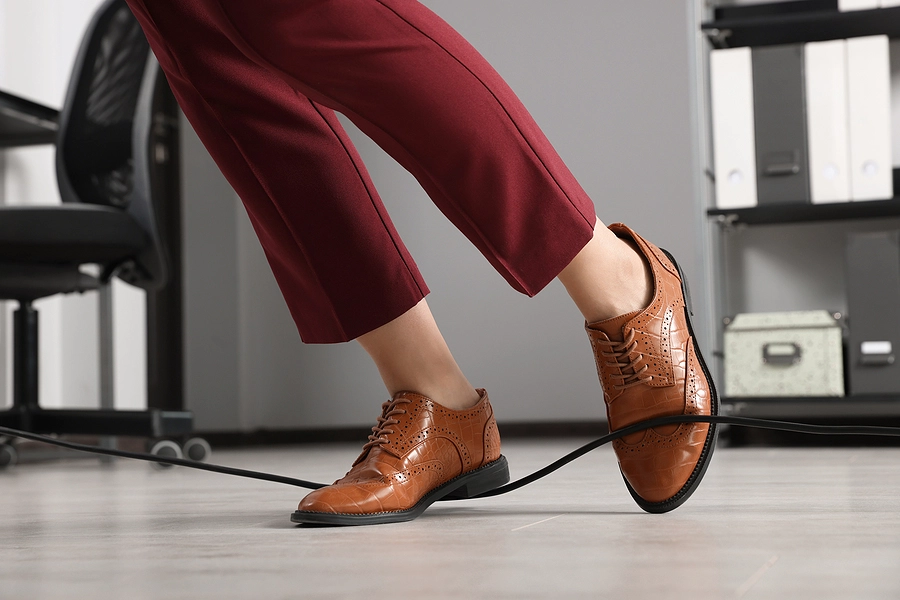How Surveillance Footage Can Strengthen Your Slip and Fall Case

Slip and fall accidents can lead to serious injuries and unexpected expenses. Proving fault, however, often comes down to the details. One piece of evidence that can significantly strengthen a claim is surveillance footage. When used effectively, video recordings can provide a clear, unbiased account of what happened—making it harder for property owners or insurance companies to dispute a victim’s version of events.
Understanding the value of video evidence and how to access it can make a difference in the outcome of a case.
The role of surveillance footage in proving liability
To win a slip and fall case in Pennsylvania, the injured party must show that the property owner or manager was negligent. This means proving they knew—or should have known—about a dangerous condition and failed to fix it or warn others in time. Surveillance footage can help confirm these details.
Video can capture the exact moment of a fall, the condition of the floor, lighting, or surrounding area. In many cases, it shows how long a hazard had existed before the fall occurred. For instance, if spilled liquid sat untouched for an extended period, it may support a claim that the store failed to maintain safe conditions.
What types of footage are helpful
Various types of video recordings can be used in a slip and fall case. These may include:
- Security cameras from retail stores, parking lots, or office buildings
- Dash cams from vehicles parked nearby
- Body cams worn by security personnel
- Cell phone recordings from witnesses or even the victim
- Home security systems in nearby residences or businesses
Footage doesn’t have to capture the actual fall. Even showing the area where the incident occurred shortly before or after can support important details.
How quickly you need to act
Surveillance footage is not stored forever. In many cases, security systems overwrite footage every few days. Some businesses retain recordings for a week, while others may keep it for 30 days. If you wait too long, the evidence may be lost permanently.
Acting quickly after a slip and fall is critical. An attorney can send a preservation letter—also known as a spoliation letter—to request that the video be saved before it’s deleted. This is often one of the first steps a lawyer takes when investigating a case.
How footage can support or challenge claims
Video evidence can do more than prove negligence. It can also clarify conflicting statements and timelines. For example:
- If a store claims a hazard was cleaned up immediately, video can confirm whether that’s true
- If the injured person is accused of running or acting recklessly, the footage can show their actual behavior
- If there were warning signs, such as a “wet floor” placard, video can prove whether they were present and visible
In addition to helping the injured party, video can also work against them if it shows behavior that contradicts their account. That’s why it’s important to review footage early and prepare for both strengths and weaknesses it may reveal.
Pennsylvania premises liability and comparative fault
Pennsylvania follows a modified comparative negligence rule. This means that even if the injured person is partially at fault, they can still recover damages—so long as they are less than 51% responsible for the accident.
Surveillance footage can help reduce the percentage of fault assigned to the injured party. If the video shows poor lighting, no signage, or employees walking past a known hazard, it can support a strong liability argument. The clearer the proof, the more likely a claim will result in a favorable settlement or trial outcome.
What to do after a slip and fall
If you’re involved in a slip and fall accident, taking immediate steps can help preserve evidence:
- Report the incident to a manager or property owner
- Document the scene with photos or video, if possible
- Get medical attention as soon as possible, even for minor injuries
- Request names and contact info from witnesses
- Contact a personal injury lawyer quickly to begin the investigation
An experienced attorney will know how to obtain and preserve surveillance footage and how to use it effectively when negotiating with insurance companies or in court.
How a lawyer uses video to build a case
When building a slip and fall claim, lawyers often use surveillance footage in several ways. It can be submitted during settlement negotiations to pressure the other side to make a fair offer. If a case goes to trial, video footage can be presented as direct evidence to a judge or jury. It can also be used in conjunction with expert testimony, showing how long a condition existed and why it created a foreseeable risk.
Footage is particularly powerful because it’s not based on memory or opinion. Unlike witness statements, it can’t forget details or be accused of bias. This makes it one of the most credible forms of evidence in a premises liability case.
When surveillance isn’t available
Even if there is no footage available, that doesn’t mean a case is lost. Photos, witness statements, maintenance records, and incident reports can all play a role. However, without video, it may be harder to prove what happened. That’s why it’s always worth exploring every possible source of footage early on.
Conclusion
In slip and fall cases, proving fault is often the biggest challenge. Surveillance footage offers a clear and objective way to show how an incident happened and who was responsible. For victims in Pennsylvania, quick action and the help of a personal injury lawyer can make all the difference in accessing and using this type of evidence.
If you’ve been injured in a slip and fall and believe video may exist, don’t wait. Preserving your rights starts with preserving the evidence.